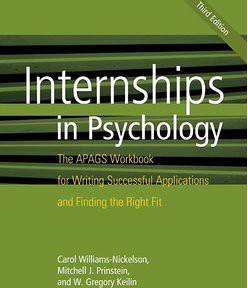I sat in the small waiting room of a staffing agency waiting for my interviewer to arrive. She was ten minutes late, and I hoped she knew that I’d been on time because I’d busted my butt and yelled at several yellow traffic lights in my attempt to be early.
I didn’t want the jobs they could offer me. I’d strictly adhered to the idea of not taking jobs outside my field. I didn’t want to be one of those psychology majors who gets seduced by an accounting firm and ends up staying for life. I loved my field, and did not entertain the thought of selling out. However, two months after graduating with my B.A., I had no job prospects.
I was bored, broke, and felt like a failure. Two kids I’d graduated high school with had been drafted to major league baseball teams. A friend of mine lived in Manhattan photographing famous models, another had topped the singer/songwriter charts on iTunes. I sat in the waiting room of a staffing agency hoping to impress with my typing speed.
My interviewer finally came out- a tiny, tanned woman with a super wide smile. She led me to a cubicle labeled “Wildwood,” between cubicles “Belmar” and “Point Pleasant.” Cute.
“Seventy-two words per minute, that’s impressive. Recent grad, creative writing minor…a psych major, huh? How’d you get into that?”
Oh. I suppose I should’ve expected to be asked why I chose my major in a job interview, but in this open office, it was too uncomfortable to give her the real reason. I stumbled for a few seconds and ended up with:
I love learning about people, so I thought I’d make money doing it.”
She smiled and wrote something on my resume- I assumed she liked that I enjoyed people. But I felt stupid for giving such a perfunctory answer.
The thing, I realized, is that “what got you into psychology” opens a can of worms that “what got you into finance” or business, or fashion, rarely touches. Of course, there are highly personal reasons to enter any field, but with psychology, highly personal is the norm.
My roommate chose psychology because much of her family struggles with addiction and she wants to help others get sober. Someone else I know comes from a military family, so she’s invested in the treatment of PTSD. I chose psychology to help couples solve their marital problems so fewer children are stunted by the weight they bear from their parents.
When you ask someone “how’d you get into psychology,” you’re often asking them about traumas they’ve overcome, mental illnesses they may face. It feels so personal because it is personal. People who love psychology are passionate, big-hearted. We are special for being that way, and should not feel less-than because we’re not making millions after undergrad.
At the end of my interview, I filled out a W-4 and consented to being called with opportunities, and I felt okay about it. Armed with my new realization, I felt like I was making necessary sacrifices for my future. Conceding to a job outside the field only dooms you to losing sight of your dreams if you let it. On the contrary, this can be a testament to your dedication.
So, the fact that your singing is abysmal, or that you’re not the newest Yankee, doesn’t mean you’re not on the path to success. It might take a little longer for those of us who don’t choose a path where success can be so instant, but it’ll be that much sweeter when we arrive.
Editor’s Note: Nicole is a first-year graduate student in Seton Hall University’s Marriage and Family Therapy Program. She is a member of Psi Chi and a new APA member. Currently she works at Abercrombie and Fitch, folding clothes and making customers happy, but hopes to eventually open her own practice for couples and families.



 First, the GOOD NEWS! The
First, the GOOD NEWS! The  The Internship Workshop is a two-hour session geared towards working through the
The Internship Workshop is a two-hour session geared towards working through the 
